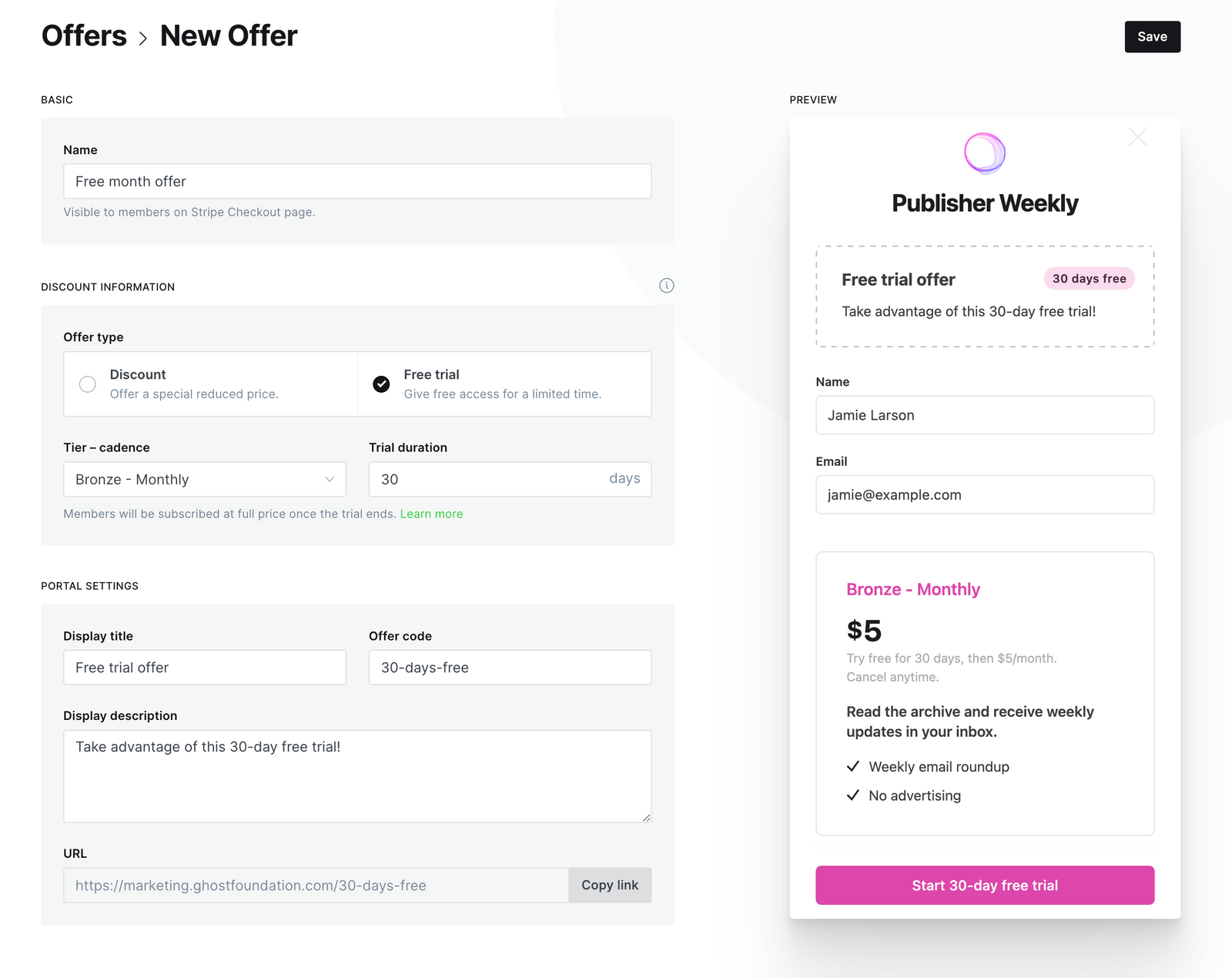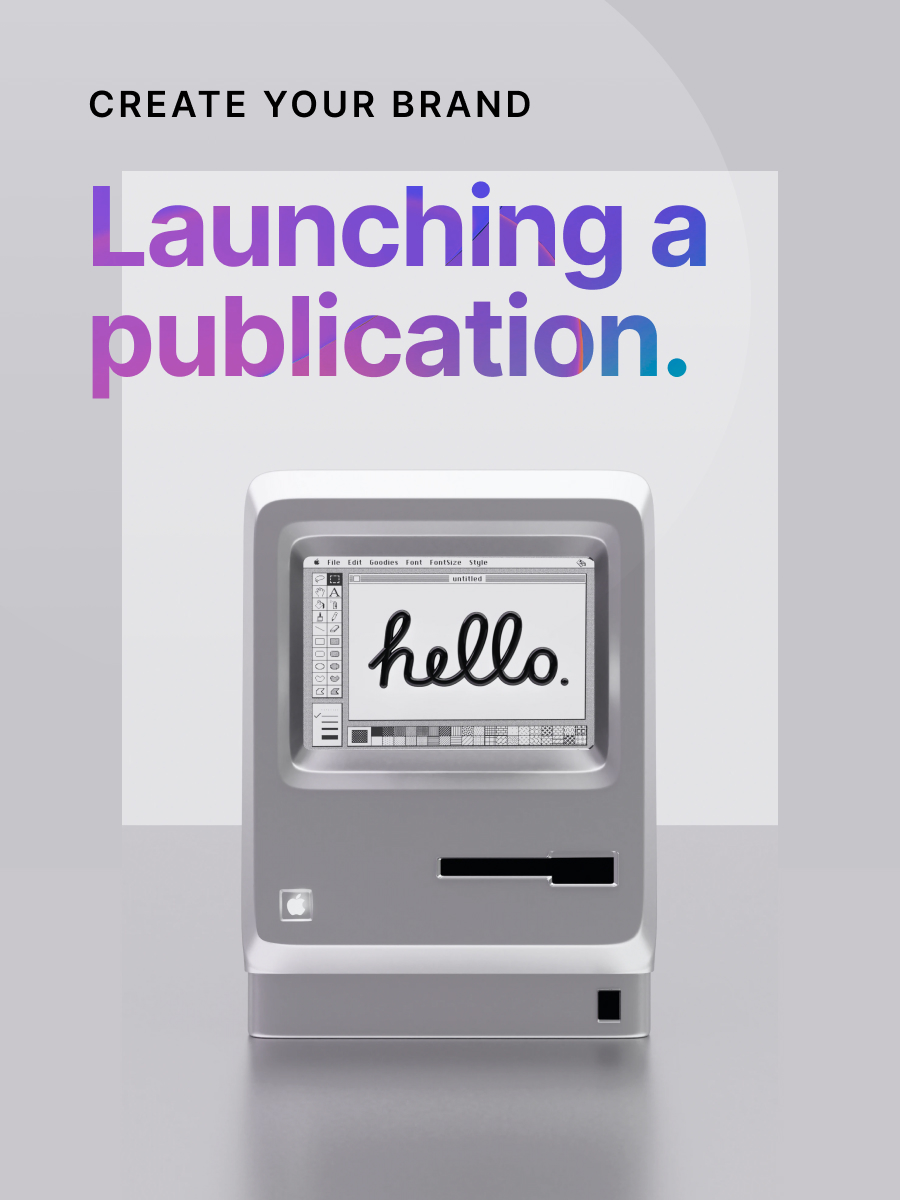How to grow a creator business with free trial signups
Free trials are a popular acquisition model amongst businesses with recurring subscriptions. Offering your readers a free trial is a great strategy to increase your subscription revenue by giving readers the chance to have access to your paid content for a set period of time — so they can decide whether it's something they value enough to pay for.
In this resource, we'll take a look at the pros and cons of offering a free trial as an indie publisher, dive into the different types of free trial, and finally, identify how to measure the success of your free trial strategy.
Pros and cons of free trials
Before deciding whether to use free trials as part of your business strategy, it's worth considering what it means for you. Here's some of the pros and cons of offering a free trial as an independent publisher.
🟢 Pros
- Reduce the need to sell upfront — without a free trial, you need to work harder to convey the value of your paid offering prior to experiencing your full product. With a free trial, you're able to convey that value directly over a set amount of time as people try it for themselves.
- Increase customer satisfaction — A free trial goes a long way towards setting expectations about what you offer, so by the time people have upgraded to a paid subscription, they already know and love your work.
- Gives you a competitive advantage — Your readers are often trying to decide whether your paid subscription is worth it. Without a free trial, they have to make that decision then and there. With a free trial, you have the opportunity to convert those that have shown interest but are yet to subscribe.
🔴 Cons
- No guarantee that people will subscribe – Some readers may start a free trial to access a single piece of content one time, and then immediately cancel. However, this isn't necessarily a dealbreaker so long as your free trial is helping to grow your business overall.
- Free trials lengthen your sales cycle — Having a free trial in place can increase the amount of time it takes for people to become paid customers, which lengthens your sales and marketing funnels.
- It takes time to get it right — Although there are several best practices highlighted in this resource, you'll still need to take the time to test what type of free trial to offer, and for how long, and then measure this against whether the free trial is helping to grow your revenue.
Carded vs cardless free trials
The first question to consider when offering a free trial is whether to ask for credit card information upfront or to allow readers to become trial members without entering any credit card details. There are considerations to bear in mind for both methods, and what will work best for the growth of your business.
Carded trials
A carded free trial is when you ask for credit card details at sign up, and automatically charge for the first month or year of subscription when the trial expires. If the trial member cancels before the trial ends, their credit card won't be charged.
Pros:
- Less friction when the trial ends. Once signed up, members don't need to take further action to become paid subscribers. If they like what you're offering, they can just let the trial end and become a customer.
- More qualified leads. People who sign up for a free trial with credit card details are typically more invested in what you have to offer, and therefore more likely to convert.
Cons:
- More friction at signup. Carded free trials tend to see fewer trial signups overall because there are more steps and an extra purchasing considerations — "What if I forget to cancel and get charged for this?".
Best used when:
- You are offering free trials to all new signups, and want to encourage potential subscribers to try out the full paid experience.
- Trials are used strategically, through offers, to convert engaged free members that haven’t made the decision to purchase a subscription yet.
Cardless trials
A cardless free trial is when you grant people access to premium content without asking for credit card information. In Ghost, cardless free trials can be offered by placing members on complimentary plans with a custom expiration.
Pros:
- Give people an easy way to experience your content. A cardless free trial experience of your content gives readers a risk-free way to decide whether to become a paying customer.
- Reduce refunds and payment queries. Since members aren't being automatically upgraded to a paid subscription when the trial ends, you can expect to have fewer refunds and payment support requests.
Cons:
- Less qualified leads. Allowing visitors to signup for a free trial on your website without entering card details can result in lots of new trials that have an extremely low likelihood of converting to a paid subscription, or even attract unwanted spam. This is why Ghost offers cardless free trials via the method of complimentary subscriptions, which gives you more control over who to offer a cardless free trial to.
- More friction at the end of the trial. Cardless free trials rely on the member being motivated to purchase during or at the end of a trial period, so you need to ensure you offer the right trial period and deliver value within that timeframe.
Best used when:
- You want to offer free trials to specific groups of people, who might not otherwise sign up for a carded free trial.
- You would like to offer VIP members an extended free trial (up to 1 year) as a thank you for their support.
- Offering free trial access to people you meet in real life, at events, or online.
Setting up your free trial
It's possible to create both carded and cardless free trials inside Ghost in just a few clicks. There are three methods of offering free trials on your Ghost publication:
- Add a free trial period to your paid Tiers to offer every new subscriber a free trial (carded)

2. Create a unique offer URL for a free trial, to use as a marketing campaign targeting specific sets of people (carded)

3. Use complimentary plans to offer a free plan that does not require credit card details, while giving members the opportunity to upgrade to a paid plan at any time (uncarded)
Read more about how to implement a free trial for your Ghost publication:

How long should a free trial be?
Figuring out how long to set your free trial is the next question to consider before implementing a new acquisition strategy for your business.
The most common lengths of time are 7, 14, and 30-days — but what works for one publisher might not work for the next. Here's a few guiding questions to bear in mind to help you figure out where to start.
What is your time to value?
The most important thing to consider is how much time it will take for members on free trials to find value in your paid offering. For example, if paid members receive one email per week, you may want to offer a free trial of 14-days, or longer, so that they have more opportunities to understand the value. Conversely, if your paid audience receive a daily email newsletter, a 7-day trial might suffice.
Is volume or quality more important?
Shorter trial periods of 7-14 days gives you a shorter sales cycle, and less time in which you may need to provide unpaid support to trial users. A longer free trial and sales cycle typically results in a higher volume of signups, but that comes with added support cost, and lower quality leads. This is an important consideration for any small business.
Are you creating urgency?
A trial that is too short may not leave enough time to discover value — but a trial that is too long may result in a loss of urgency. In other words, if you leave people on a free trial for too long, they may lose interest or forget about you completely.
Measuring success
When using free trials to grow a business, it's important to understand how to measure the impact your strategy is having. There are two key metrics that you can use to do this:
Signup conversions
How many new people are signing up for your free trial? This metric uses your website analytics data, and the total number of trials to assess how successfully you are convincing visitors to signup for a free trial.
For example: In the past month, your publication has had 20,000 unique visitors, and 500 people signed up for your free trial. 500 / 20,000 which is 2.5%.
You'll need to use a web analytics tool to get your unique visitor numbers and calculate your signup conversion rate. Read more about web analytics for publishers:

This metric is just one part of the puzzle, and while it may seem like a good idea to get as many people as possible to sign up for your free trial, it's often more important to attract the right people to sign up to increase the likelihood on conversion to paid later.
Trial-to-paid conversions
How many people are upgrading from your free trial to a paid subscription? This metric uses your subscription data to assess how successfully your free trial is convincing new signups to become paid customers.
For example: If you had 500 trial members in the past month and 100 of those members converted to a paid subscription, your trial-to-paid conversion rate is 20%.
It's possible to find this data in your Stripe account, or by using an integration with a business analytics tool such as ChartMogul. Read more about subscription metrics:

Understanding your trial-to-paid conversion rate is important so you can understand how well your free trial is performing, and make important business decisions. Review your trial-to-paid conversion rate monthly to find out whether it is increasing, decreasing, or staying the same.








